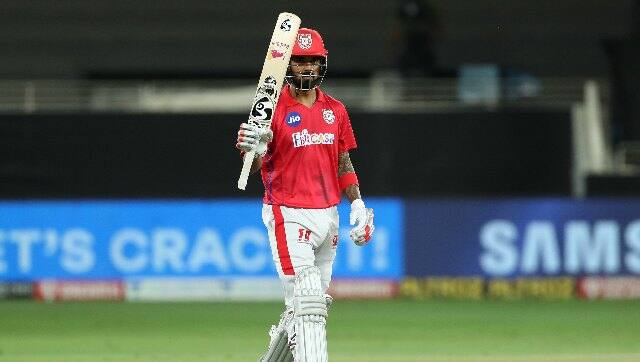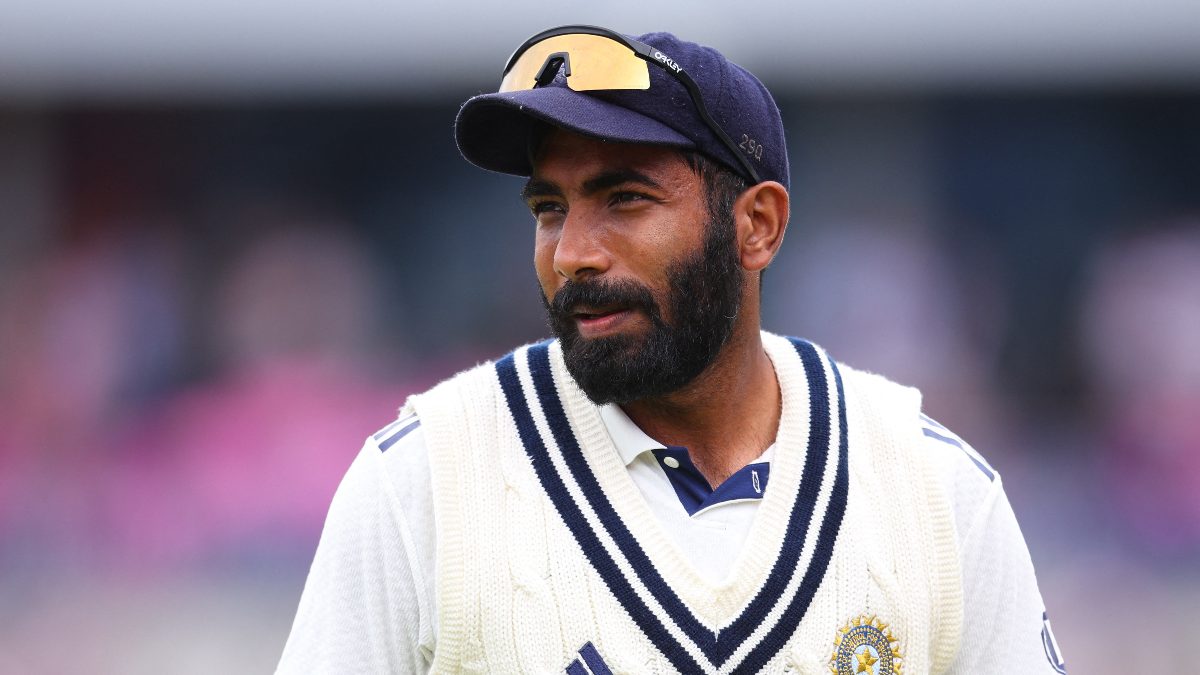There were, as always, high-profile flops (Cummins, Maxwell, CSK’s old guard) There were, as always, the names to mark for the future (Padikkal) Of course, we found out so much about each team, some things we knew, some we didn’t. Like MI being light years ahead of the competition, the rest being a distant second, and CSK being in dire need of change. – Game 1: For the first time, the first ball of an IPL season produces a boundary. Game 60: For the first time, the first ball of an IPL final produces a wicket. Rohit Sharma on 19 September. Trent Boult on 10 November. Between one constantly commanding champion, and seven consistently inconsistent challengers, we found ourselves transfixed by the season that so nearly wasn’t. Over the last two months, IPL 2020 didn’t change our lives, or save us from all that’s now a forced part of our fabric. But it showed sport for its most powerful, without being hyperbolic, quality: as our greatest distraction, our safest drug. And the cricket itself gave us so, so much. That Tewatia epic. That Double Super Over. That mad scramble for qualification. As much as the winners were in their own galaxy, the rest of the pack had never previously been as tightly bunched – only two points separated third place from eighth, and for the first time, the MVP came from the bottom-ranked team in the competition. There were, as always, high-profile flops. There were, as always, low-budget sensations. There’s so much we found out. That Mumbai Indians are light years ahead of the competition; that Chennai Super Kings are in dire need of change; that there is no substitute for planning; that ‘intent’ is much more than a buzzword. As we thank the UAE for providing the stage that seemed so implausible months into the postponement of the season, what is it that we will take away from this campaign? What did we learn from IPL 2020? Anchors to the rescue? Maybe not [caption id=“attachment_8929151” align=“alignnone” width=“640”]  KL Rahul was the leading run-scorer, by a margin. His 670 runs were scored at 7.76 per over. Sportzpics[/caption] Well, so that didn’t change from the primetime telly-viewing we had before the IPL began! It’s a concept that had been hyper-analysed enough before this season, and those debates will only continue much longer after the events of IPL 2020. One set of numbers, alone, can’t support a theory, but for the purpose of this argument, let’s highlight one of many data-points to support it. KL Rahul was the leading run-scorer, by a margin. His 670 runs were scored at 7.76 per over. Take away his two high-impact knocks, and he made 461 runs at less than seven an over. MI didn’t have anyone in the top-four run-getters this season, but each of their three batsmen to cross 400 runs did so at a rate of above 8.4 per over; between them, Ishan Kishan, Quinton de Kock and Suryakumar Yadav, each of whom batted only in the top-four, scored nearly 1500 runs at 8.62 per over. You know who finished where, between MI and KXIP. The champions did have Rohit Sharma finishing with a season strike rate under 130, but when it’s sandwiched between three players going about at 140+ the way his companions were, the ‘anchor’ can stay afloat. And that’s where pretty much every other team got it wrong. Delhi Capitals had Shikhar Dhawan’s newfound gears to thank for keeping their batting efforts respectable, and intentful; Royal Challengers Bangalore were severely dented by the lack of middle-over levers from their legendary duo; Kings XI and CSK were hurt by an overly cautious approach from one or all of their batsmen, respectively. Some of the names in this sinking anchors boat present an intriguing narrative. India, we might have a problem How many anchors does it take to screw a T20 team? We might find out soon. Of the 20 batsmen to score 350 or more runs this IPL, only seven did so at a season strike rate less than 130. From lowest (117.96) to highest (129.34), these names were: Shubman Gill, Virat Kohli, Shreyas Iyer, Devdutt Padikkal, Ambati Rayudu, Manish Pandey and KL Rahul. Spot something in there? Yeah, four of these seven are likely to take spots in India’s top-five when they play their three T20Is in Australia next month. And the fifth, Shikhar Dhawan, has just had an aberration of a campaign (strike rate 144.73) for someone with a career T20 strike rate hovering around 125. How do India not dominate the T20 World Cup given their wealth of IPL riches… have you found yourself asking that question, often? Well, you have an answer. Ps. Suryakumar Yadav: 480 runs at 145.01. 1416 runs at 136.28 since 2018. Just saying. ‘Pace is pace, yaar’ [caption id=“attachment_8953551” align=“alignnone” width=“640”]  As it turned out, the four leading wicket-takers of IPL 2020 were all pacers. Sportzpics[/caption] To think that at one point, just as the tournament’s relocation was being confirmed, a lot of us started seeing which teams were best stocked with spin/slow-bowling options and felt the winner would likely come from among those teams. As it turned out, the four leading wicket-takers of IPL 2020 were all pacers – only the second time that’s ever happened in an IPL season, after 2017. Six of the top-eight wicket-takers, to stretch it, were fast-bowlers. Fast bowlers. Seriously fast bowlers. Like strap your seat belts and wear your helmets fast. Kagiso Rabada and Jasprit Bumrah, we’ve known for years, crank it up in the mid-140s consistently. Trent Boult, at third, might be more reliant on swing for his wickets, but that’s not out of being wanting for pace. Anrich Nortje bowled the four fastest deliveries of the tournament, including the only two balls that were clocked at above 155kph. Nortje and Jofra Archer, between them, delivered nine of the 10 fastest balls of the season – and were responsible for 49 of the 71 deliveries that were recorded at 150+. Mohammed Shami, tied with Archer on 20 wickets, wasn’t ever short on pace either. Between them, Rabada, Bumrah, Boult, Nortje, Archer and Shami picked up 144 wickets – more than a fifth of the total wickets to fall all season, between six searing showcases of speed. Batsmen win matches, bowlers win tournaments Not a newfound narrative at all, but IPL 2020, more than ever, showed how you can’t cut it without a proper bowling attack at your disposal. And not just one gun bowler. Archer was the MVP, but in the absence of any real quality among his support cast, look where Rajasthan Royals finished in the standings. In KL Rahul, Mayank Agarwal, Chris Gayle and Nicholas Pooran, Kings XI had enough form and fire to make for a potentially title-winning assembly – but the crew around Shami, in particular of the pace-bowling variety, was just not consistent enough, and they couldn’t even make the playoffs. MI, of course, were a different league, but look at all the other teams that qualified and you find the common thread. DC’s batsmen bar Dhawan gave up on them fairly early in the season, yet Rabada and Nortje (with able assistants in R Ashwin and Axar Patel) pulled them through to the final; as much as SRH and their late-season surge was boosted by Wriddhiman Saha and Kane Williamson, they wouldn’t have survived as long as they did without being the tournament’s best bowling attack in terms of both economy and average; RCB, too, were lifted (for once) not by the weight of their batsmen, but the wiles of their bowlers. The four best-performing bowling teams from the league stage made the top-four; the second-best batting unit finished sixth. Do you feel the balance of power shifting? Stability: An underrated facet of T20 cricket [caption id=“attachment_8963791” align=“alignnone” width=“640”]  The usually laid-in-stone CSK fielded 20 different players and only settled on a combination in their last three games. Sportzpics[/caption] Chopping and changing. Horses for courses. New day, new combination. How much does it help? Mumbai Indians aside, every team used at least 18 players this season. Mumbai Indians, meanwhile, used 15 – which included Dhawal Kulkarni’s appearance in the last league game against SRH (when Bumrah and Boult were rested for the playoffs), and Jayant Yadav’s two appearances specifically for Delhi Capitals’ left-handers. In simpler parlance, MI used only four players outside of what they zeroed in as their strongest/first-choice XI. RCB made four changes to their lineup for the Eliminator, alone. The usually laid-in-stone CSK fielded 20 different players and only settled on a combination in their last three games, after being removed from playoff contention – they won all three, compared to 3/11 before that. KKR and KXIP’s inability to retain lineups – or captains, even – reflects in successive seasons of missing out on the playoffs for both, despite seemingly possessing as good units, in both years, as the teams finishing just above them. The class of 2020 ‘Where talent meets opportunity.’ As every year, the greatest source of joy, from an overall Indian cricket perspective, was the unearthing of stars, the discovery of gems to polish for the future. So much can be said of the entity that is the uncapped Indian player on the back of this season. Three of them (Ishan Kishan, Suryakumar Yadav, Devdutt Padikkal) finished among the top-10 run-scorers – one even landing the most sixes in IPL 2020. Two were among the top-10 wicket-takers (Varun Chakravarthy, T Natarajan). Devdutt Padikkal, Ruturaj Gaikwad, Nitish Rana, Suryakumar Yadav, Ishan Kishan, Rahul Tewatia, Ravi Bishnoi, Varun Chakravarthy, T Natarajan, Arshdeep Singh, Kartik Tyagi. That makes for a pretty decent XI, doesn’t it? Now add Rahul Tripathi, Priyam Garg, Abdul Samad, Abhishek Sharma, Kamlesh Nagarkoti, Shivam Mavi, Murugan Ashwin. There’s no dearth of talent. Let’s hope, when rightfully deserved, they also keep earning the higher opportunities to truly bolster Indian cricket at the world stage. To sparkling times ahead! The Team of IPL 2020 If it’s end-of-season, of course it’s time for dream teams. Here is this author’s selection, sure to incite debate – is it even a ‘team of the tournament’ if it doesn’t? Shikhar Dhawan, Mayank Agarwal, Suryakumar Yadav, Ishan Kishan, AB de Villiers (wk), Marcus Stoinis, Rahul Tewatia, Rashid Khan, Jofra Archer, Jasprit Bumrah, T Natarajan
We found out so much about each team, some things we knew, some we didn’t. Like MI being light years ahead of the competition, the rest being a distant second, and CSK being in dire need of change.
Advertisement
End of Article


)

)
)
)
)
)
)
)
)



